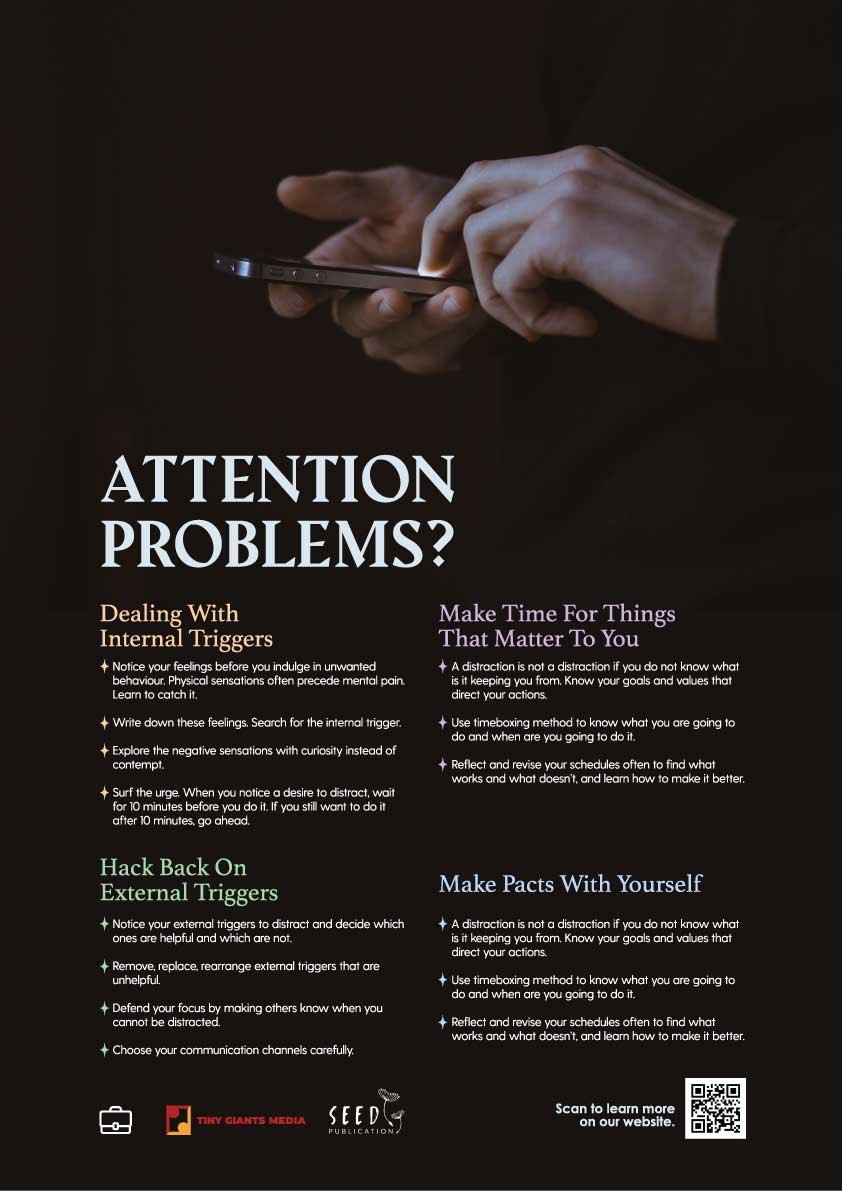Dealing With Distractions In An Oversaturated World.
Attention is one of the most important resources we have. It is not time, but the attention that we lose. Time is a given, always there, always the same. But how we spend our time is determined by what we pay attention to.
Have you ever tried to sleep early, only to find yourself at 3 am rewatching Friends? Or scrolling Instagram for hours instead of doing your work? We’ve all been there and we blame distractions that are available to us. We try attention diets that suppose to battle our technological addictions.
Nir Eyal is one of the people who decided to look into the problem of distraction and find a way to battle it.
In his book Indistractable, he says that human behaviour has been proven to be motivated not by the pursuit of pleasure like many of us think, but by avoidance of pain. He proposes that when we have to do something challenging or mentally painful, our brain tries to wiggle out of it by distracting itself from the task or thoughts about it.
So, in essence, distraction is just a way our brain escapes pain.
Therefore if we want to avoid being compulsively distracted and lead a life that is purposeful and spend more days pursuing our goals, we will have to learn to manage pain.
Nir Eyal provides an elegant pathway to handle distraction habits:
Deal with internal triggers that cause you pain and urge you to find a distraction, and master them.
Make time for things that truly matter to you.
Hack back external triggers and adapt your environment to suit your needs.
Use the power of pact making.
Here are some more details for each step:
Dealing with internal triggers.
Learn to notice your feelings preceding unwanted behaviour. When you come across things that make you cringe, cause you pain or discomfort your body will experience certain feelings of discomfort right before you indulge in compulsive behaviour. You might be swinging your leg, clenching your jaw or experiencing heart palpitations.
Write down these feelings. Search for the internal trigger. It might be that you had a certain thought or an uncomfortable emotion.
Explore your sensations. Instead of giving in to distraction immediately, take a few moments to sit with the discomfort. Feel it, recognise it, accept it and watch it for a bit. This itself might decrease the intensity of the emotion.
Surf the urge. When you notice a desire to distract, wait for 10 minutes before you do it. If you still want to do it after 10 minutes, go ahead. Chances are you won’t because the liminal moment has passed and you can go back to doing what you really wanted to do.
Make time for things that really matter to you.
A distraction is not a distraction if you do not know what is it keeping you from. Therefore you need to know your goals, and to know them you need to know your values. Following the example of a Stoic philosopher Hierocles, Nir offers us three main values to make time for: you, your relationships, and your work.
Plan ahead and create a schedule using a time-boxing method in order to accommodate time for your values. Time-boxing is a fancy term for deciding what you are going to do and when are you going to do it. The goal here is to eliminate white space in your calendar so that you have a template of how you want to spend your time each day.
Reflect and revise your schedules often to find what works and what doesn’t, and how you can make it better for your needs.
Hack back on external triggers.
Notice your external triggers and decide which ones are helpful and which are not.
Remove, replace, rearrange external triggers that are unhelpful.
Defend your focus by making others know when you cannot be distracted
Choose your communication channels carefully
Make pacts.
It is not enough to keep distractions out, you also need to rein yourself in. Pre-commitments can reduce the likelihood of distractions.
“Ulysses pact” is a freely made decision that is designed and intended to bind oneself in the future. Such pacts should be done after you went through the first three steps of the Indistactable process.
An effort pact makes it difficult to indulge in unwanted behaviours. There are many ways to make them such as blocking Apps and scheduled electricity plug points.
Dealing with distractions is important to those who recognise the finitude of their time and who choose to live by their values. Painful and challenging moments are the root causes of our brain trying to distract itself. The harder the task, the more resistance we will have towards doing it. Dealing with your triggers, making smart time-boxing, knowing your goals and values, building your environment and making pacts with yourself will allow you to spend the maximum amount of your attention on things that make the most difference.
Good luck!
Based on:Indistractable: How to Control Your Attention and Choose Your Life by Nir EyalWe Are Seed Publication!
We make enriching posters for condominiums in Malaysia, building communities and spreading insights that matter to people.
More Articles:
Contact us:


